In this guide you will learn how to steam milk for lattes, cappuccinos, and pretty much any coffee! Whether you need to improve your milk steaming skills for work or just want to steam milk at home - I guarantee after reading this article you will produce much better steamed milk!
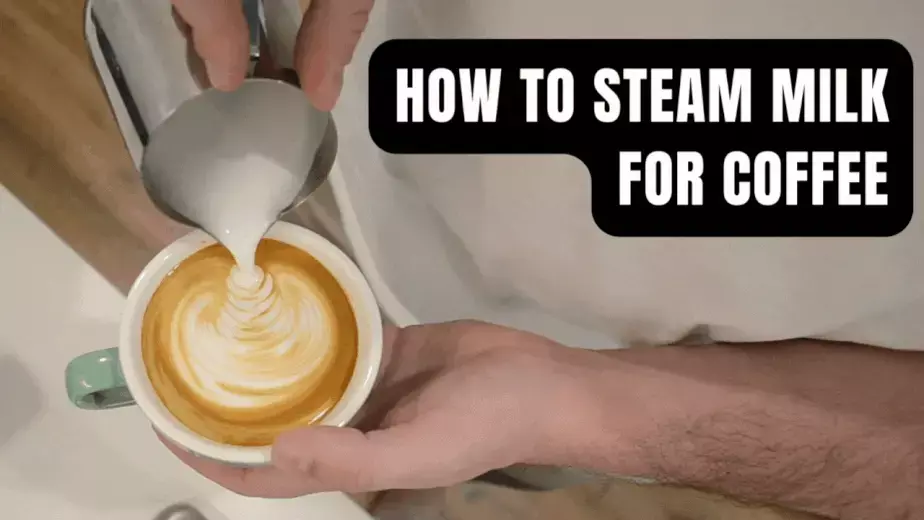
What Is Steamed Milk?
Steamed milk is the end result of milk being exposed to high pressured steam from a espresso machine.
It's made by introducing steam gradually into milk until the natural fats within it expand to create ‘micro-foam’, which is a layer of very small milk bubbles.
The end result is a smooth, silkily beverage perfect for espresso based drinks. The idea sounds simple enough but in practice it requires a gentle touch and sound technique.
How To Steam Milk At Home For Coffee
1. Fill The Jug With Milk
The first step is to fill your milk pitcher with cold milk. While this may sound like an obvious step, it’s actually quite important to get the right amount of milk in your jug. Not only to produce the best steamed milk but for conserving milk.
Fill the milk half way up the jug until the surface of the milk hits the lower nudge or ‘v’ of the jug spout.
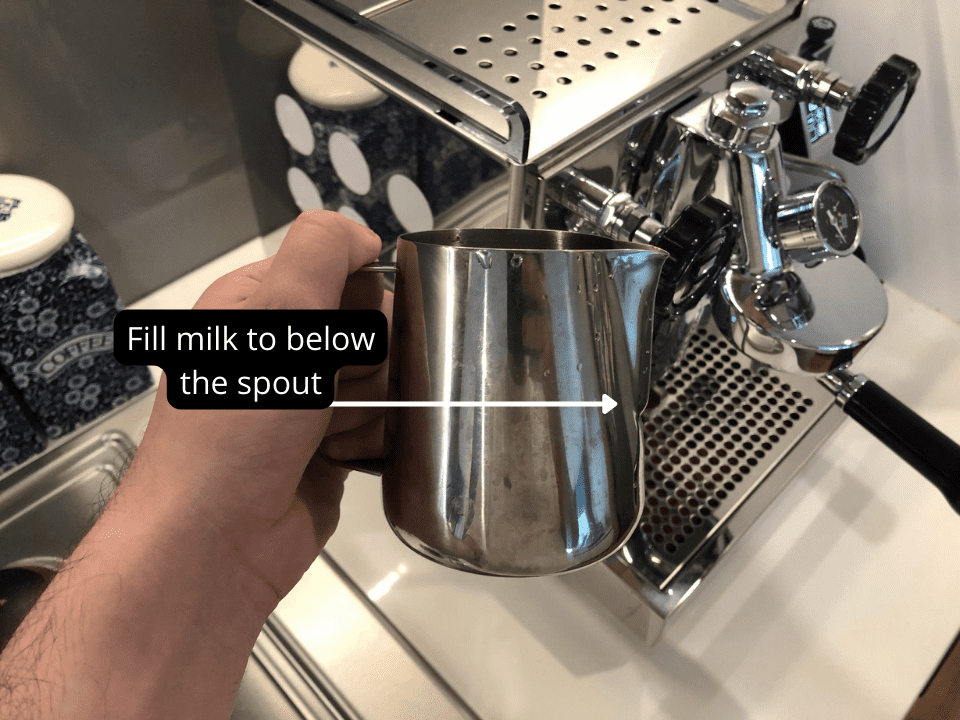
Having the correct milk not only helps with frothing but also saves milk! So always fill up to the lower spout v!
2. Stretch The Milk
The second step is called ‘stretching’ and is when you turn the steam on and have the nozzle of the steam wand below the surface of the milk to make a hissing sound. This processes creates micro-foam by letting air gently into the milk.
The key is to have the nozzle just a fraction under the surface of the milk in order to create foam while making the milk spin in a whirlpool motion.
I find that the milk stretching stage lasts about 5 seconds as you only need to introduce a little bit of air into the milk. Once you create enough foam for your coffee — more for a cappuccino less for a latte — you move onto the third stage.
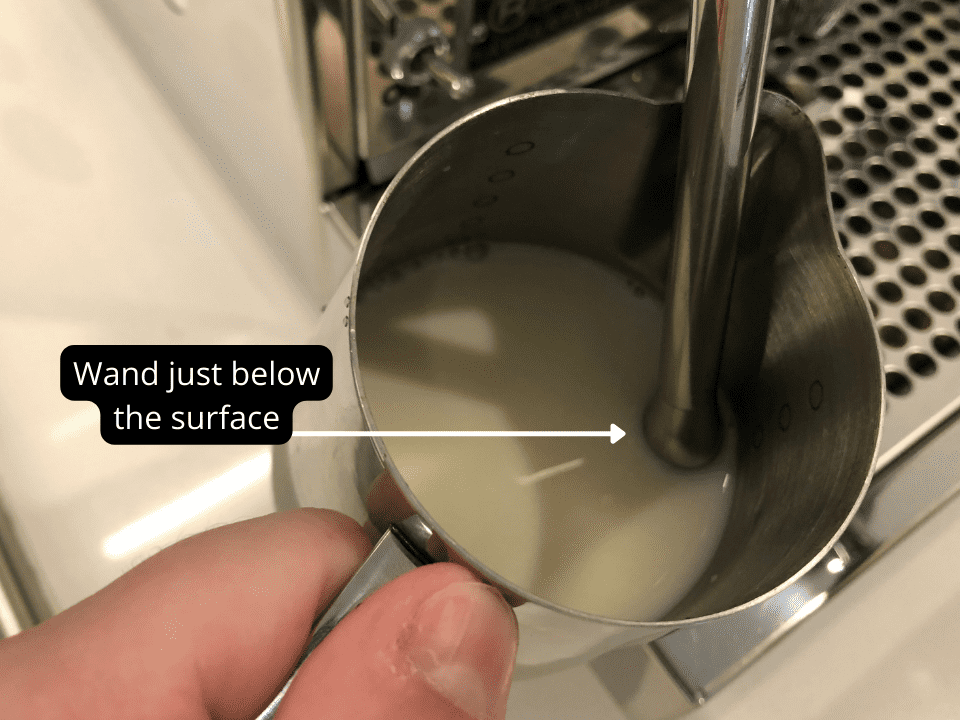
You just need to insert the "tip". Nothing suss about it.
3. Keep Spinning The Milk In A Whirlpool Motion
The third stage is called ‘spinning’ and is when you submerge the steam wand nozzle another fraction below the milk — literally half a centimetre (1/5th of an inch) — and continue to spin the milk in a whirlpool motion.
You should hear no hissing sound other than the occasional leftover bubble being eaten up by the steam wand.
This spinning process mixes the micro foam with the milk in order to ‘polish’ the milk. The key to spinning the milk is to tilt the jug a little to get the perfect whirlpool.
You’ll need to find the sweet-spot which is a little off-centre and try to keep it there from start to finish. You can see me doing this below.
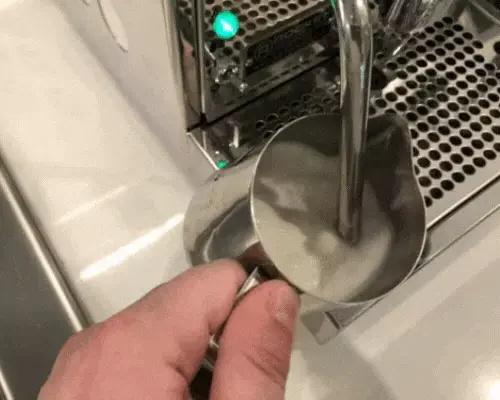
Make sure the milk is always going in a whirlpool motion.
Keep spinning the milk until the jug becomes too hot to touch or around 60 degrees celsius (140 fahrenheit) then turn off the steam and wipe your steam wand with a wet, clean cloth.
However I find when steaming milk for latte art it’s better to have the milk a little cooler around 50 degrees celsius (122 fahrenheit). You can use a frothing thermometer to make sure you get the right temp.
4. Rest And Polish The Steamed Milk
Once the milk is made give the jug one solid THUMP on the counter to disperse any big bubbles and then leave it to sit whilst you put the espresso shots on.
Then, before pouring, swirl the milk around the jug to polish the milk and to make sure the milk and micro-foam is together. The more shiny the milk the better, but don’t be too rough otherwise you’ll make new bubbles.
You want the milk to look like wet paint.
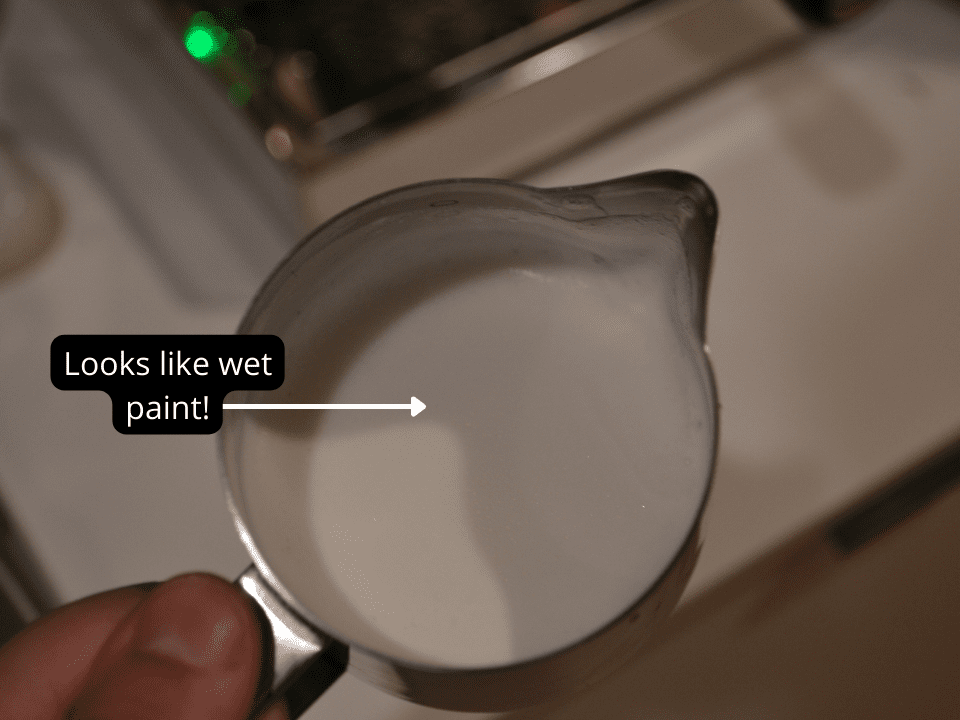
You want your froth milk to look like wet paint.
5. Pour The Milk Into Your Coffee
When the milk is well-spun, the foam will pour out of the jug first because it sits near the top. You want to pour the milk into the coffee at a steady pace.
The key is to pour the milk along the side your cup by resting the spout of the jug on the top of your cup.
If you used a big jug you will want to distribute the foam between the different coffees. The general rule is to pour cappuccinos first, hot chocolates second, lattes third and flat whites last.
A handy tip is to ‘split’ your milk by pouring half of your milk into a smaller jug. This lets you have more control of how much foam you add to your milk-based espresso drinks -- this is very handy to make coffee art like me below.
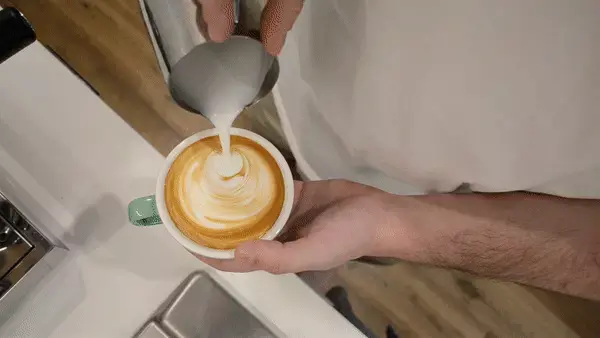
You need perfect frothed milk to make coffee art. So get practising!
6. You've Steamed Milk!
Congratulations you’ve now learned how to steam milk! Make sure to match it with our guide on making espresso. Or if you want to take a short cut to steamed milk check our top milk frothers post.
To recap what we’ve learned below is a quick diagram of the above steps:
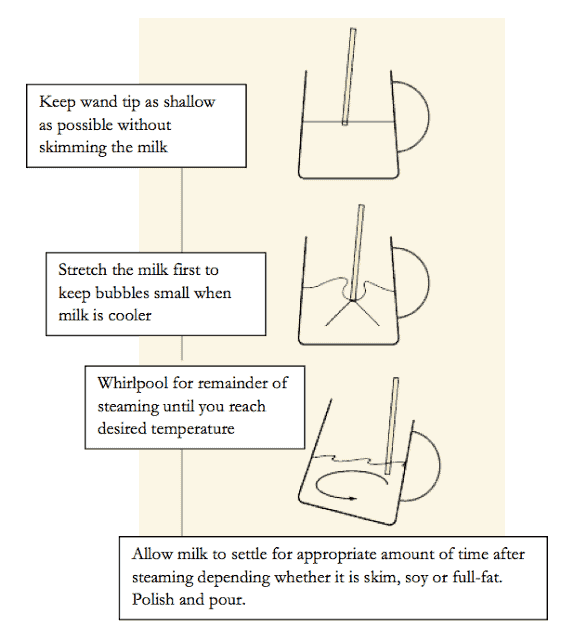
Feel free to share this diagram, just give us a link back to this blog if you do!
Milk Steaming Video
Below is a video guide of me frothing milk that you can check out on my youtube channel. Make sure it read it in combination with this blog post to get the most out of it.
Note: The type of machine you have at home may affect your ability to make textured milk. If your machine is not cranking out enough steam I recommend upgrading your gear. Check out our guide on the best latte machines for this.
Milk Frothing FAQ
Below are some common questions people ask about frothing milk. If you have any extra questions, please leave a comment below and I'll add it to this list.
How to steam milk for a cappuccino?
When steaming milk for cappuccinos you want to add extra air into the milk when texturing / stretching the milk. You will know more air is going into your milk as you will hear more hissing sounds and the milk will grow. Once you've gotten more air into your milk, then you continue with spinning to combine the micro foam with the milk.
What type of milk jug is best for latte art?
In my opinion there's no best brand, rather what you want to look for is who the jug is constructed. For more intricate designs, you want to make sure you have a pointier spout. If you want to do big hearts or tulips, then a wider spout is better.
What type of milk is easiest to froth?
Normal whole milk or skim milk are the best milk for frothing in my opinion. This is because they have better fats that take air much easier and also have a higher boiling point. This means you can froth and mix for longer, which makes it much more forgiving. In this guide I used the below skim milk from my local shops - nothing fancy.
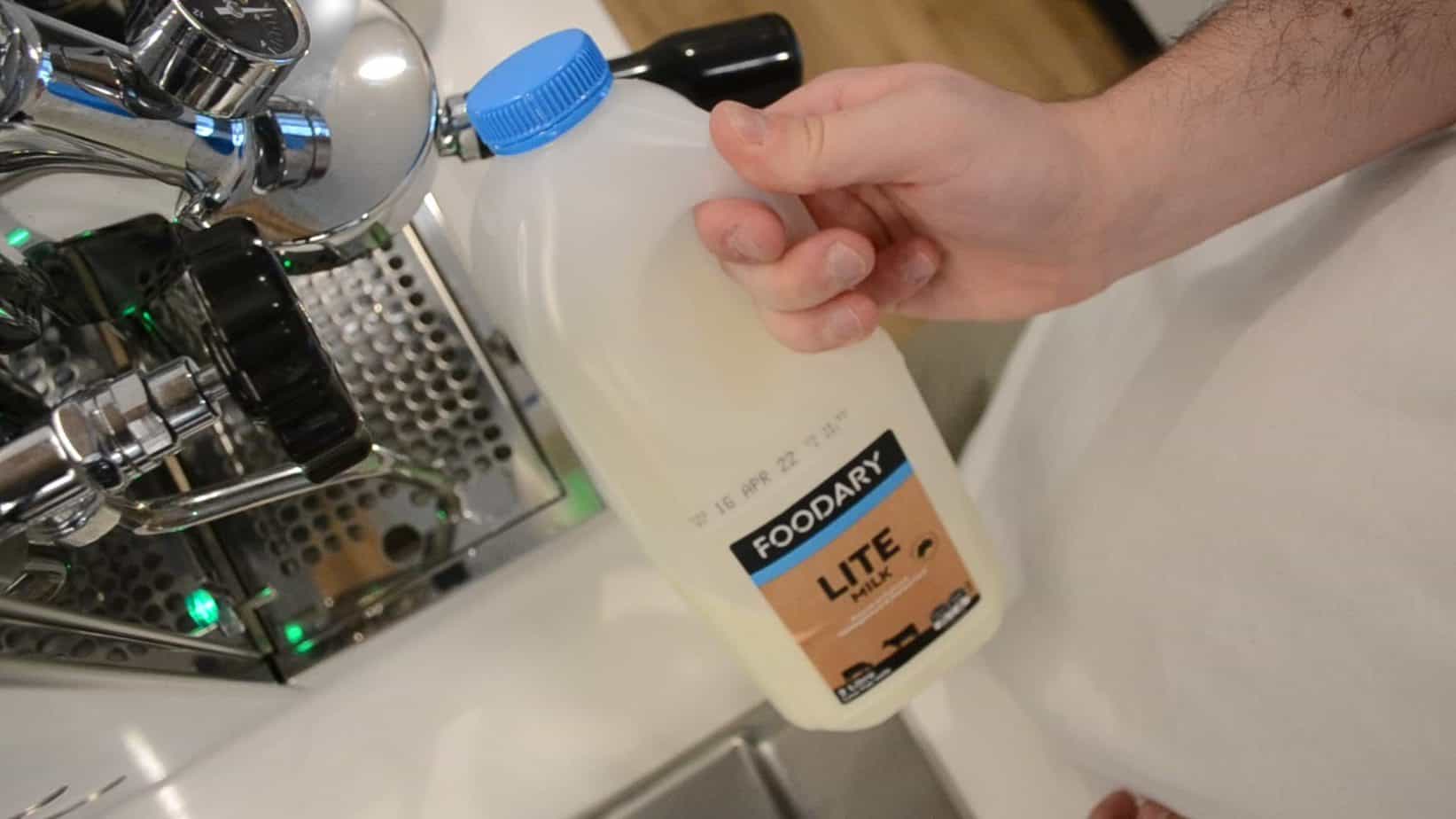
Make sure you use cold milk when frothing. This gives you more time to texture your milk.
How to steam milk without a coffee machine?
The two easiest ways to steam milk without a coffee machine is by either using a automatic milk frother or a manual frother. However, please note you will not get the same milk as you would from a coffee machine. This is because you won't have the steam wand needed introduce air bubbles to make make textured milk. Rather the frothed milk will be extra frothy and not suitable for coffee art.
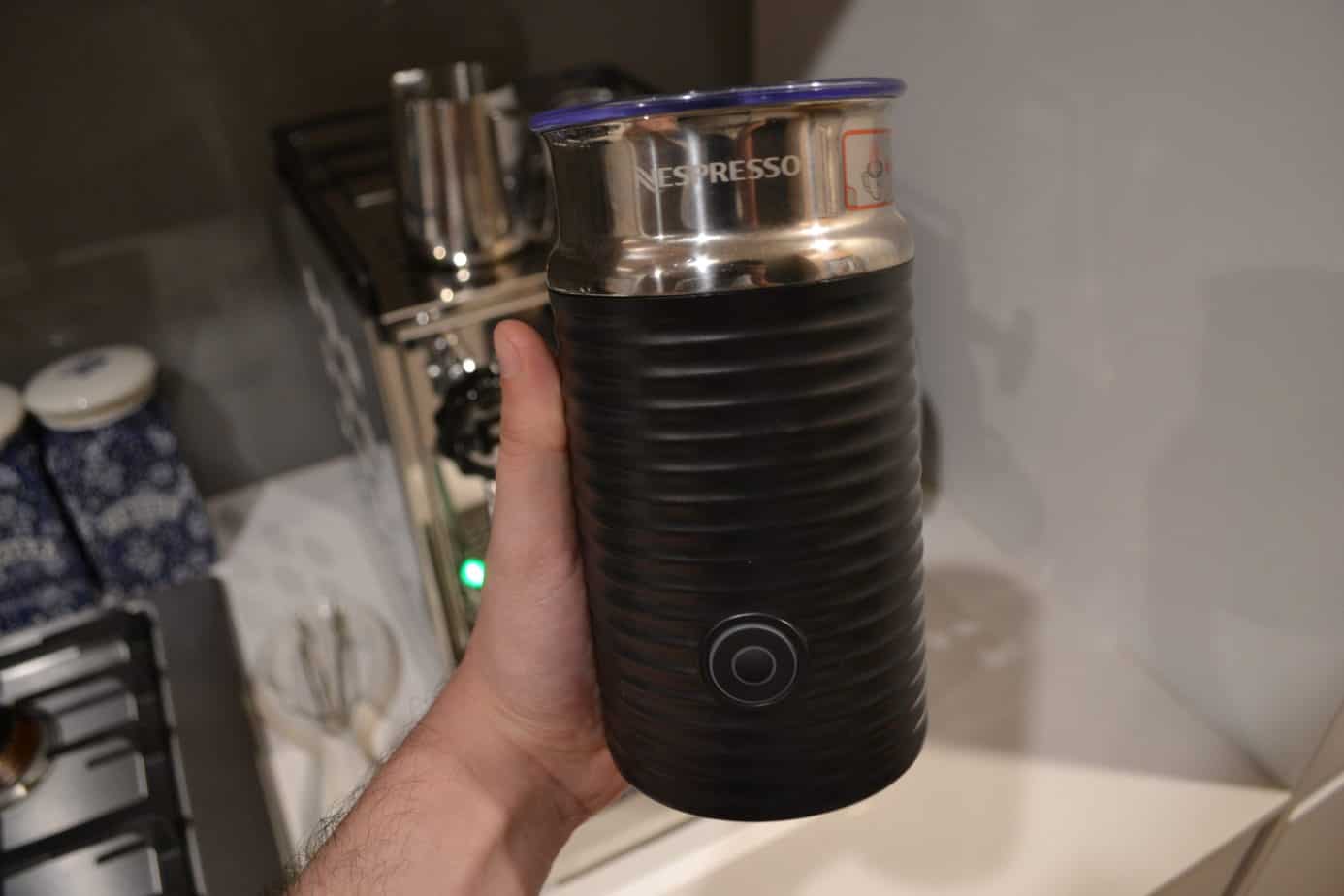
An automatic milk frother can make thick foam. But it's not as good as an espresso machine.
How to steam milk for latte art?
When steaming milk for coffee art you want to make sure you do two things. Firstly, you don't want too much micro foam. You want to have just enough to be able to cut through your espresso. I find about 3-5 seconds for milk texturing is enough. Secondly, you want the milk to be on the cooler side, 50 degrees celsius (122 fahrenheit). I find cooler milk does better when cutting through the espresso to create designs. Other than that, just make sure you re-read this guide and keep practising! Make sure to view our latte art course to master latte art.
Steam milk vs foam milk, is there a difference?
In my opinion when I say steamed milk, it describes the process in this article of steaming milk with an espresso machine to create micro foam, and then combining it with the milk to create textured milk needed for lattes and cappuccinos. Whereas foamed milk is just that, foam, before it is incorporated into the milk to create steamed milk.
Keep learning! More latte art guides below...
Latte Art Classes
1. Basics of Coffee Making
2. Beginner Latte Art
3. Advanced Latte Art


Hey thanks for the comment on steaming milk [on my blog] I'm glad you like my stuff!
This is a great guide. I've tried for years to get good foam, but I haven't tried this! Can't wait to test it out.
Love all your tips! Any favourite brands when it comes to milk pitchers?
Not so much favourite brands, as long as they're the right shape they serve me well. I prefer pitchers with a slightly more pointed spout as it gives you greater control when you do latte art. Glad my tips helped 🙂
Thank you for the awesome tips!
Great article. Might wanna fix the typos, though: :… the jug until *it* the surface..” and “spilt” should be “split.”
Thanks Dani, all fixed up.
I remember how my senior taught me: u put da thing in da pot and finda point when it goes like ‘shu-ush-h-h’ and then u like move da pot around so it keeps going ‘shu-ush-h-h’ untill its ok to serve.
Tis good to have a comprehensive guide about the stuff. 🙂
I’ve taught people at work with sound effects too haha. But instead of “shu-ush-h-h” I say the milk should should like “hiss-hisss-hissss” and if it sounds like “GUSSHHHHHHH” you’ve stuffed it up. Glad the guide helped 🙂
when do I can tell that I steamed the milk perfectly? I have a lot troubles with that
I tend to tell people you want the milk to look like “wet paint” – e.g. you want the micro foam and milk to be perfectly mixed and shiny.
Ne znam da li razumes ali pitacu te ipak. Ako ne mogu i na engleskom . 🙂 Zanima me , pocetnik sam kao barista i radim u restoranu. Koje latijere mi trebaju sve ( gramaza ili u ml ) i koliko mi treba mleka za jedan kapucino odnosno 2 , 3 kada imam vece porudzbine . Da ne bih trosio previse mleka. Nigde ne mogu da nadjem razmere pri pravljenju kreme za kapucino odnosno produzeni sa mlekom pa ako mozes da mi pomognes bio bih ti zahvalan. 🙂
This article is really helpful for me.
I tried steaming milk for latte. https://www.youtube.com/watch?v=S0eS-z9Ws94
It would be really appreciated if you could give me your advice.
Thanks very helpful